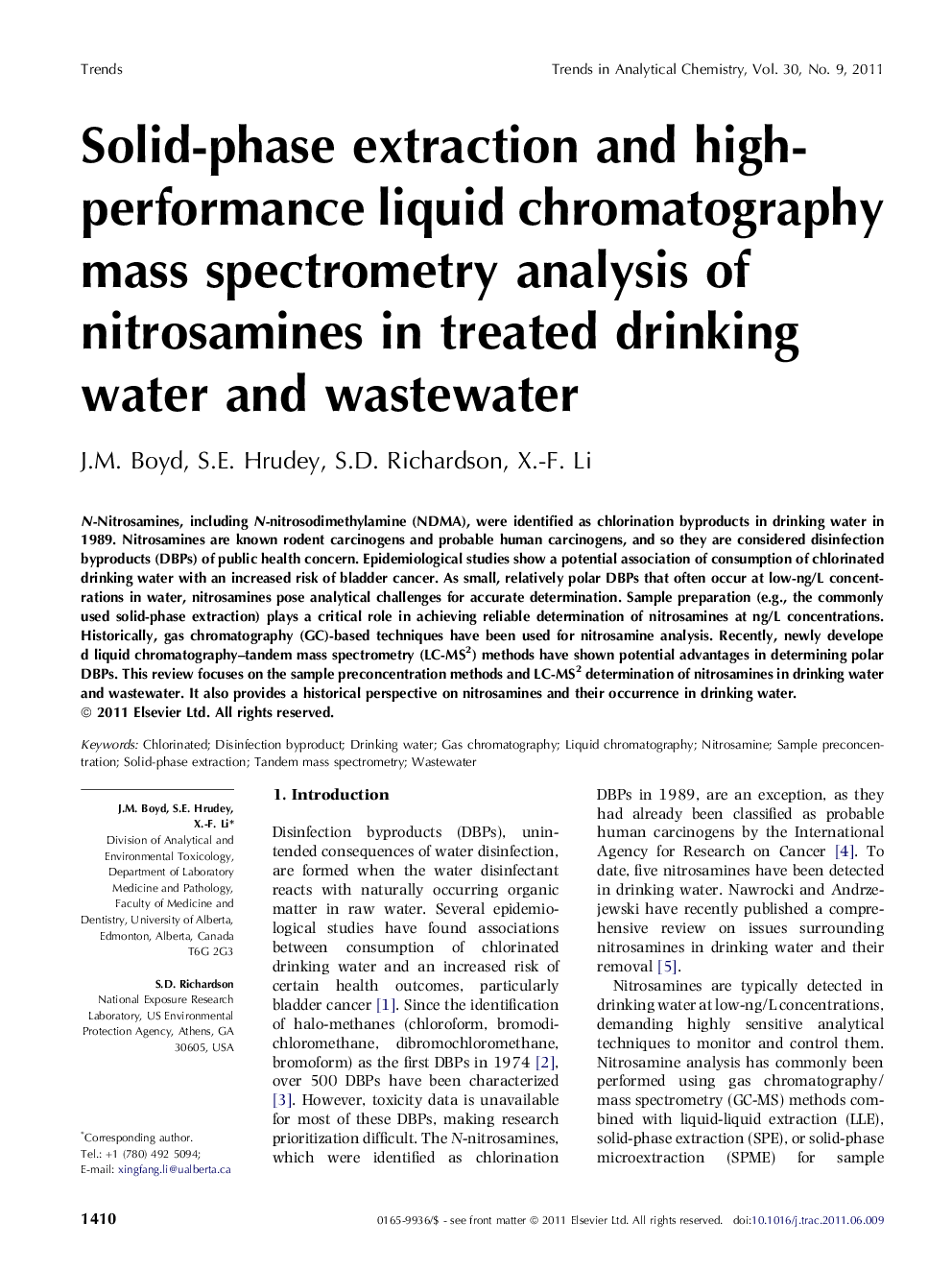| Article ID | Journal | Published Year | Pages | File Type |
|---|---|---|---|---|
| 1248369 | TrAC Trends in Analytical Chemistry | 2011 | 12 Pages |
N-Nitrosamines, including N-nitrosodimethylamine (NDMA), were identified as chlorination byproducts in drinking water in 1989. Nitrosamines are known rodent carcinogens and probable human carcinogens, and so they are considered disinfection byproducts (DBPs) of public health concern. Epidemiological studies show a potential association of consumption of chlorinated drinking water with an increased risk of bladder cancer. As small, relatively polar DBPs that often occur at low-ng/L concentrations in water, nitrosamines pose analytical challenges for accurate determination. Sample preparation (e.g., the commonly used solid-phase extraction) plays a critical role in achieving reliable determination of nitrosamines at ng/L concentrations. Historically, gas chromatography (GC)-based techniques have been used for nitrosamine analysis. Recently, newly developed liquid chromatography–tandem mass spectrometry (LC-MS2) methods have shown potential advantages in determining polar DBPs. This review focuses on the sample preconcentration methods and LC-MS2 determination of nitrosamines in drinking water and wastewater. It also provides a historical perspective on nitrosamines and their occurrence in drinking water.
